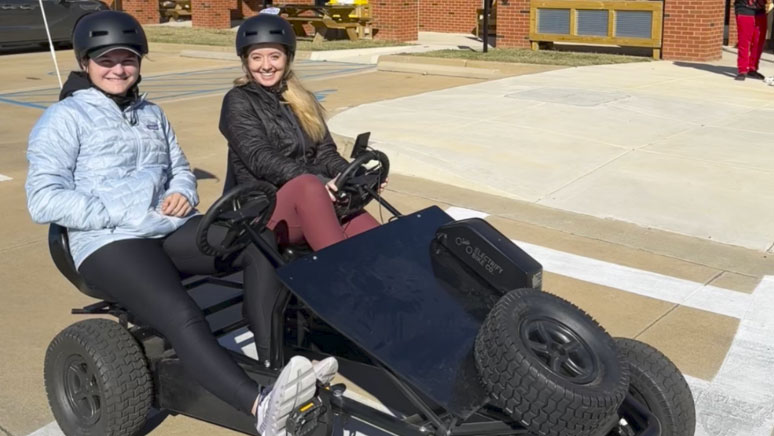Safety Science Engineering: A Catalyst for Reducing Lithium-Ion Battery Risks
2023-24 Xplorlabs Educator Fellow Charles Sabatier shares his experience implementing Xplorlabs in the classroom.
Posted
March 31, 2025
;)
2023-24 Xplorlabs Educator Fellow Charles Sabatier shares his experience implementing Xplorlabs in the classroom.
March 31, 2025
;)
In 2023, I learned about safety science by participating in the first cohort of UL Research Institutes’ Xplorlabs Educator Fellowship. I always had a focus on safety in my classroom, but during this yearlong fellowship, I learned about the science of safety and how to get my students involved in learning about this exciting area of research.
In the fall of 2022, I was awarded a $5,000 grant through the Tennessee Valley Authority to modify a two-seat pedal cart into an electric vehicle powered by a large, 52-volt lithium-ion battery and recharged with a 200-watt solar panel. My second-year engineering students identified a variety of engineering challenges that had to be solved to complete this project. One of the first things we focused on was safety, specifically ensuring we didn’t burn our building down as my students explored content on potential thermal runaway and fire risks in malfunctioning hoverboards. Much of this content was even new to me as I had not worked with batteries and solar panels this large before.
It’s funny how learning works sometimes. As I began losing sleep about thermal runaway risks, a friend told me about a new fellowship opportunity for teachers sponsored by ULRI’s Institute for Research Experiences & Education that helps bring safety science learning into the classroom through an interactive learning resource called Xplorlabs. While I had heard of both UL Research Institutes and Xplorlabs, I didn’t know much more than that before becoming a ULRI Xplorlabs Educator Fellow.
The first activity of the fellowship was to explore the Xplorlabs pathways on thermal runaway, battery supply chains, and fire forensics. While this did not solve my lithium-ion battery anxiety, it did provide me with a wealth of information and resources to help my students learn about the primary concern surrounding lithium-ion batteries — thermal runaway.
As part of the fellowship, I got to attend the 2023 ULRI Annual Research Symposium at Northwestern University to learn about cutting-edge safety science research being conducted at UL Research Institutes. This also included a tour of a UL Solutions lab where they test the same lithium-ion batteries we were using in our electric vehicle. I returned to school jazzed to start planning the electric vehicle project, which would now include teaching students about new-to-me potential careers in safety science as well as helping them develop a plan to safely work with our lithium-ion battery. You know, to not burn down the building.
The final EV project for my second-year engineering students allowed them to identify a variety of problems in converting our pedal cart into an electric vehicle. Most relevant to my work in the fellowship was the science of safely using, charging, and storing a large lithium-ion battery.
Students used the engineering design process to attach a 1,000-watt electric motor to our pedal cart; 3D print parts to connect the throttle, digital display, and speed sensor to the cart; and create a safety manual for both operating the vehicle and working with the lithium-ion battery and solar panel. Students recommended the location for mounting the battery to best protect it and learned to adjust the parameters of the solar panel to safely charge the battery.
To learn more about lithium-ion battery storage, charging, and safe use, I encourage you to use and teach Xplorlabs in your classroom — The Science of Thermal Runaway pathway is a great way to get started!